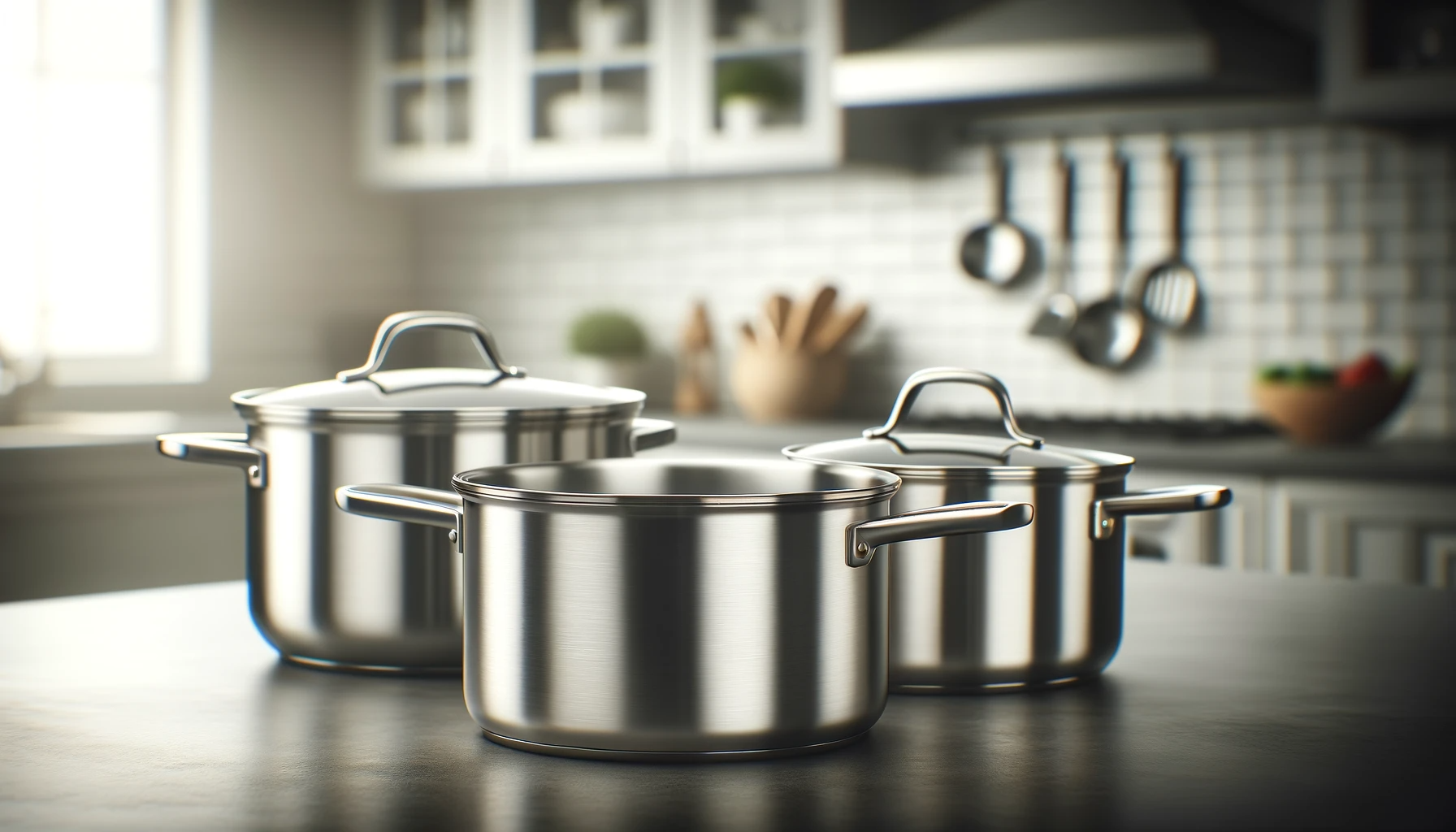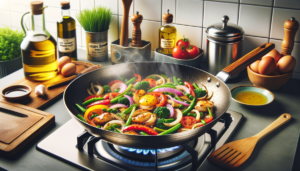Have you ever wondered if that shiny stainless steel pot you cook tomato sauce in for hours on end could be leaching metals into your food?
While stainless steel is considered non-reactive, research shows that small amounts of nickel and chromium can migrate from cookware into acidic foods, especially over high and prolonged heat exposure.
Let’s examine what factors cause leaching, how to minimize it, and whether it poses any serious health dangers to be aware of when cooking with stainless steel.
Does Stainless Steel Cookware Leach into Food?
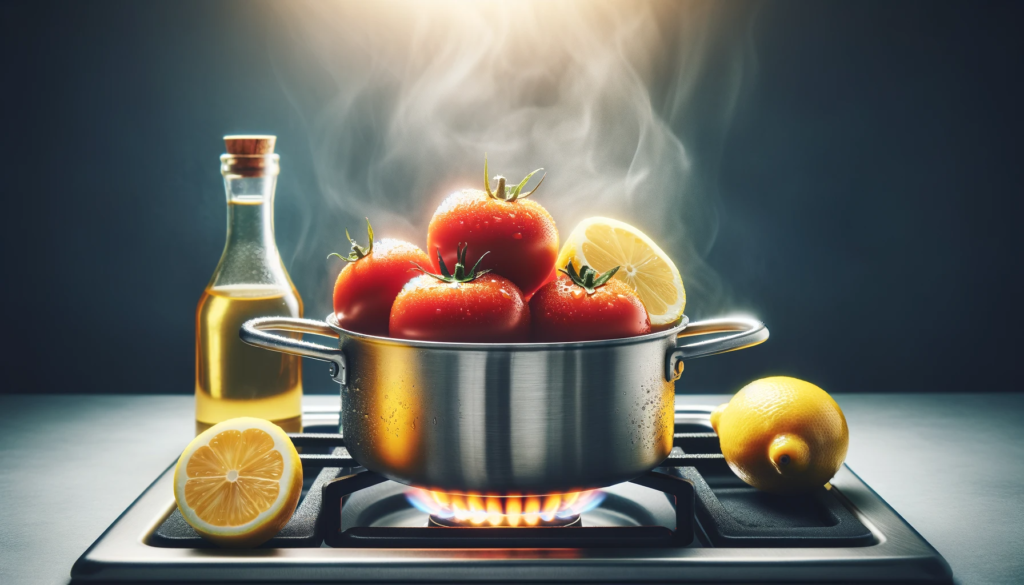
Yes, stainless steel cookware can leach small amounts of nickel and chromium metals into acidic, wet foods during prolonged heating above 150°F.
Traces of iron and manganese may also migrate from stainless steel alloys into food over time.
The rate of leaching increases the longer acidic liquids like tomatoes, vinegar, or lemon juice are left touching stainless steel pot walls while simmering.
Scratches and wear additionally raise leaching potential.
However, for typical home cooking durations, stainless steel leaching is considered negligible and within safe limits, causing little to no health risks for the general population without metal allergies.
Choosing quality cookware and minimizing overheating further reduces stainless steel metal migration.
We’ll explore the topic of leaching from stainless steel cookware further in depth below.
What is Stainless Steel?
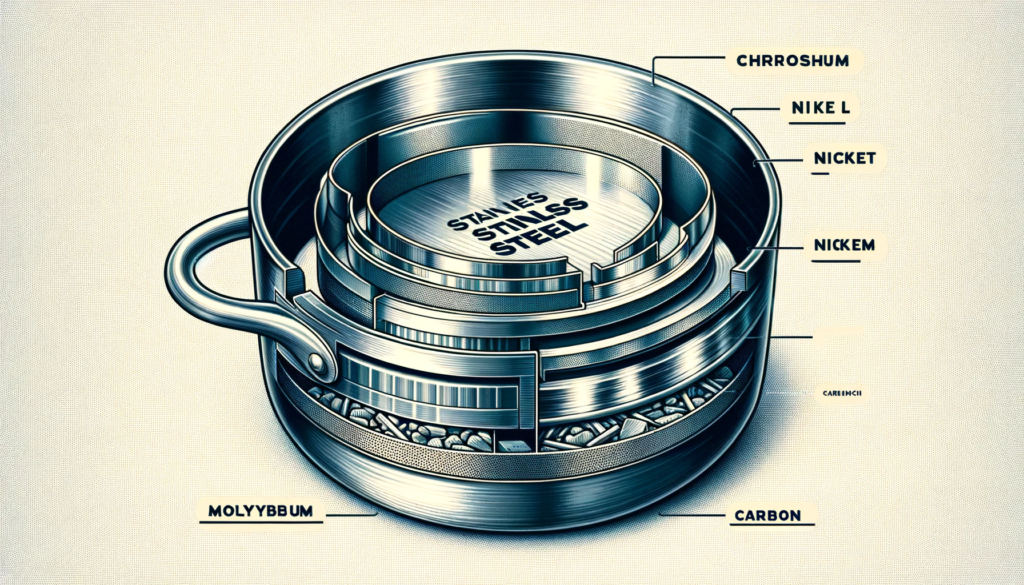
Stainless steel is a versatile alloy that is made up of various metals, including chromium, nickel, molybdenum, titanium, copper, carbon, and silicon.
Read our best stainless steel recommendations here: https://enlivewire.com/stainless-steel-cookware/choose-best-stainless-cookware/
The most common grades used to manufacture pots and pans contain chromium and nickel as the main components.
Chromium gives stainless steel its corrosion resistance, durability, and lustrous appearance.
Nickel enhances the corrosion resistance, ductility and strength of steel.
When combined, these elements create an ideal material for cookware that is long-lasting, low maintenance, and resistant to wear and tear.
Stainless steel has become immensely popular for cooking utensils, appliances, and commercial kitchen equipment due to its advantageous properties of being hardy, sturdy, and able to withstand high temperatures without warping or changes to its structure.
The chromium content in stainless steel, usually ranging from 10-20%, forms an invisible passive layer of chromium oxide on the steel’s surface when exposed to oxygen.
This protective layer prevents rust and corrosion from developing despite scratches or wear to the metal over time.
The nickel content, typically making up 8-12% of stainless steel alloys, provides further corrosion resistance and also increases the durability, tensile strength and hardness of the steel.
Various stainless steel grades have differing amounts of these metals to produce optimal properties for specific applications, from cutlery to chemical equipment to construction materials.
When used for food contact and cookware, the 300 series stainless steels containing both nickel and chromium are ideal, as they maximize stain and corrosion resistance for such uses.
Grades 304 and 316 stainless are most popular, able to withstand the rigors of heavy cooking usage in home and restaurant kitchens while maintaining food safety.
Overall, stainless steel’s winning combination of strength, stability and corrosion resistance under high heat makes it a ubiquitous and sensible choice for cookware manufacturing.
Does Stainless Steel Leach into Food?
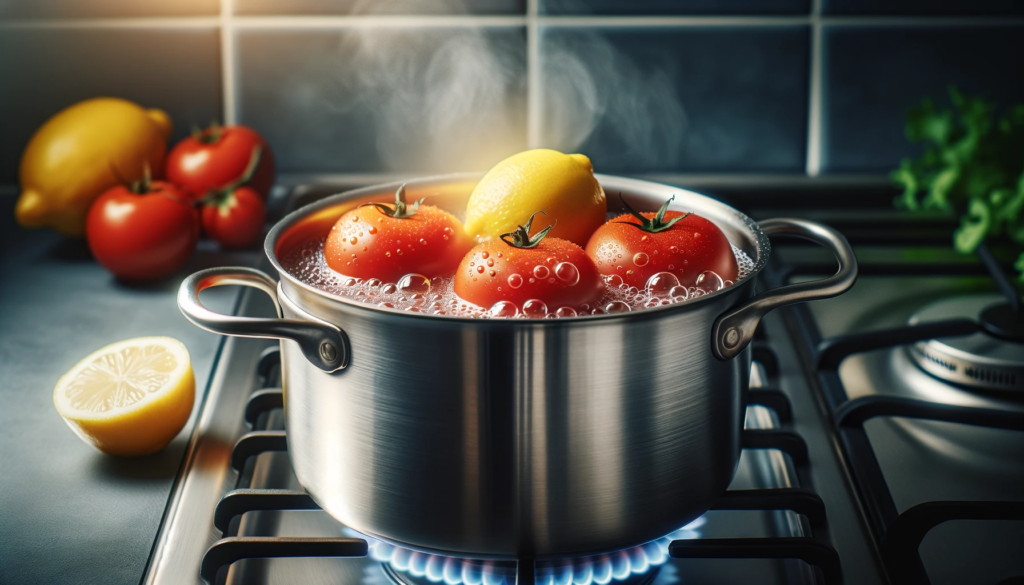
Although stainless steel is generally considered food-safe and non-reactive, one question that often comes up is whether small amounts of metals like nickel and chromium can leach from stainless steel pots and pans into food during the cooking process.
The answer is that yes, minute or trace amounts of these metals can migrate from stainless steel into acidic or wet foods over an extended heating time.
The chromium and nickel ions released are measurable in parts per million and parts per billion ranges, indicating very low leachate levels that are well within accepted safety margins.
How much leaching occurs depends on several factors, including the quality and composition of the stainless steel itself, any damage such as scratches or dents to the cookware surface that allow more food contact with exposed metal, the length of exposure to heat while cooking or simmering wet foods in the steel pots, and the characteristics of the food such as acidity levels, moisture content, saltiness, etc.
Highly acidic foods like tomatoes, citrus juices, vinegars and broths appear most susceptible to drawing metals out of stainless steel through a chemical reaction when cooked for a long duration or exposed to excess heat.
The more time a wet, acidic food spends touching and reacting with the steel alloys at high temperatures, the more potential leaching can occur.
Food sciences researcher have found greater metal migration the longer tomato sauce simmers unattended in stainless steel pots, especially once hitting the 8+ hour mark.
One study found that nickel may leach into tomato sauce at higher rates directly in line with the duration and temperature intensity of heating.
However, for most home cooks such extreme simmer times are unlikely.
Brief boiling, steaming or pan frying does not significantly impact leach rates for most stainless steel cookware.
Tips to Minimize Leaching

While stainless steel leaching poses little serious health risks in most typical cooking scenarios, there are some steps you can take to further minimize any potential metal migration into foods when cooking for added safety:
The first tip is to choose high-quality stainless steel cookware, as professional-grade steel contains higher, optimized chromium and nickel content to reinforce corrosion and leaching resistance.
Commercial cookware is engineered for rigors of all-day restaurant use, standing up well to heavy-duty cooking.
Avoid old, damaged pots with scratches, dents or excessive deposits that may allow more food contact with exposed metal.
Matching lids also help minimize direct food contact with cookware walls.
It also helps to use lower temperatures when possible to cook foods in stainless steel, as extremely high or prolonged heat encourages leaching from cookware in general.
Optimal stainless steel performance happens in the medium heat range rather than maximum heat.
Simmering pasta sauce or steaming vegetables have less leaching worries than trying to rapidly boil gallons of liquids for hours.
For boiling acidic liquids like tomato sauce or lemon juice, try decreasing cook times to reduce the acidic food’s contact with the steel walls over prolonged periods.
Periodically remove very acidic broths or goods after hitting cooking points.
Be sure to wash stainless steel cookware thoroughly after cooking highly acidic ingredients to clear anyfood residues so they do not continue reacting with steel longer than necessary.
Consider storing such leftover acidic foods afterwards in non-reactive glass or ceramic containers instead of leaving them to cool in the cookware.
By following stainless steel equipment manufacturer instructions, leveraging quality cookware, and avoiding excessive temperatures/cook times, users can experience excellent results with the peace of mind of minimal metal leaching into foods.
Is it Dangerous?
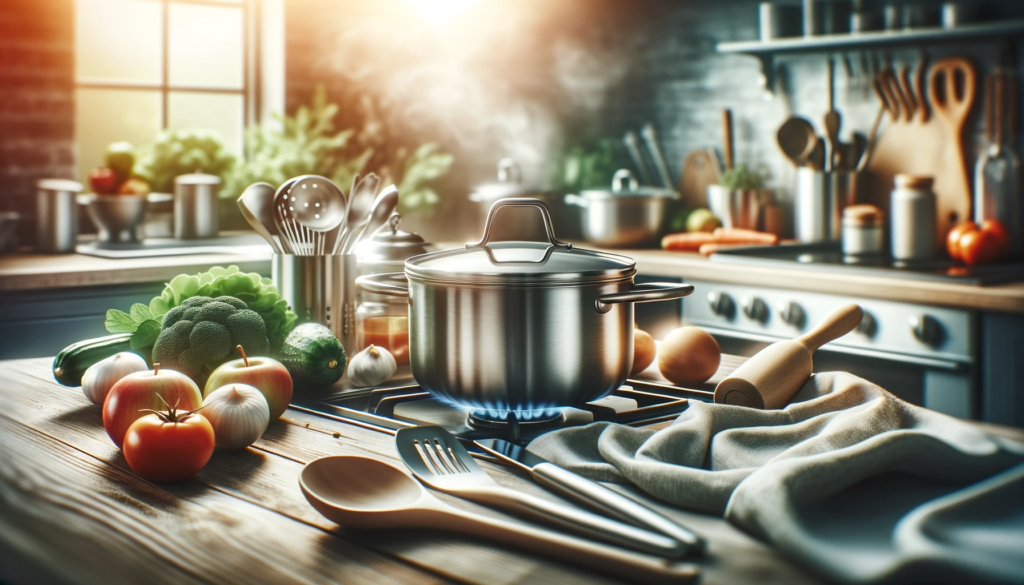
Research shows that the minute levels of stainless steel leaching that can occur pose very little threats or health risks in most typical cooking circumstances for the general population.
However, those with specific metal sensitivities or allergies, such as a nickel allergy, may want to take extra safety precautions when cooking to limit potential exposure from cookware.
While there are no definitive epidemiology studies proving that highly infrequent, low-level nickel or chromium exposure from ordinary stainless steel cookware use significantly raises cancer risks over a lifetime, those concerned can minimize leaching as mentioned in the tips above.
Monitoring acidic cook times and avoiding scorched foods avoids exposing anyone with sensitivities to metals unnecessarily.
For the general population not medically impacted by metal sensitivities, the very low stainless steel leachate levels observed through routine home cooking are deemed safe by health organizations, although deeper clinical research continues investigating comprehensive long-term exposure effects.
Award-winning research this decade has concluded stainless steel as an optimal non-toxic cookware material for public health, despitehypothetical worst-case leaching dangers which exceed typical real-world cooking habits.
Conclusion
In conclusion, while trace levels of metals like nickel and chromium can leach from stainless steel cookware into acidic foods during prolonged heating, this poses negligible health risks for most people under typical cooking conditions.
Choosing high-quality pans, avoiding excessive heat and cook times, and properly cleaning cookware after use further minimizes any potential leaching.
For those with specific metal allergies, taking extra precautions when cooking acidic foods is sensible to limit exposure.
But for the average home cook, stainless steel remains a durable, inert, and safe cookware option when basic guidelines are followed.
